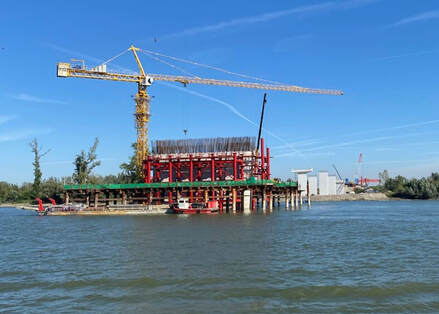"A good construction schedule is essential to the success of every construction project." I find construction schedules invaluable on all of my projects. For small projects they could be simple hand drawn bar charts and for large construction projects they could consist of thousands of linked tasks created using specialist software such as Primavera, Microsoft Project, Candy or similar. Why are construction schedules important?Construction schedules are useful because:
"A properly planned construction schedule will avoid clashes or hold-ups on the project" Common errors with construction schedulesSome of the more common errors include:
"This book helps with practical tips learned from real experiences. A must read book for the people who are involved in construction projects, especially project managers." Construction schedules are essential to contractors and project ownersPreparing the best workable construction schedule or construction program is an art, a science and one that needs expertise and experience. The schedule needs to reflect how the construction team will build the facility, the realities of the construction site, the available resources and skills, the local conditions and the contractual requirements. Committing to a construction schedule which is impossible will cause damage to both the contractor and the customer. Following a schedule with flawed logic will invariably result in a delayed construction project, or even some completed work having to be redone. Ignoring the schedule or not conveying the contents of the construction schedule to those in the field defeats the purpose of preparing the schedule. Construction schedules are useful to contractors and customers and shouldn’t be viewed as just a contractual requirement, or another document for the customer to ‘whip’ the contractor. How you can make your next construction project more successful. This article was first published on the ClockShark website - Get The Industries' #1 Time-Tracking AppRunning a field service or construction business takes coordination and a great team. With ClockShark you get the industries' #1 timesheet app Please share this post Learn more about Construction Project Management"Have read two of your books and their practical slant make them essential reading for any budding construction PM, they should be on academic reading lists rather than those dull theoretical PM texts kids are made to read!" To read more about the author’s books and find out where you can purchase them visit the pages on this website by clicking the links below:
'Successful Construction Project Management: The Practical Guide' 'Building a Successful Construction Company: The Practical Guide' 'Construction Book reviews' To read more about the author visit the page 'Paul Netscher' Want to contact Paul Netscher please enter your details on 'Contacts' Find out how Paul Netscher can help you Order your books from Amazon Order your books from Amazon UK © 2016 This article is not to be reproduced for commercial purposes without written permission from the author. construction management construction project management
0 Comments
Leave a Reply. |
Archives
June 2024
Note: We welcome genuine comments, especially comments that add additional information to the subject matter in the article. We however reserve the right to remove inappropriate comments, which includes comments that have nothing to do with the subject, comments that include inappropriate language, and comments that are an advertisement for a product or company, or which include an advertising link. Comments must be in English. We will not enter into discussion on why a particular comment was removed.
CategoriesCopyright 2016 - The attached articles cannot be reproduced for commercial purposes without the consent of the author.
The opinions expressed in the attached articles are those of the writer. It should be noted that projects are varied and different laws and restrictions apply which depend on the location of the contractor and the project. It's important that the reader uses the supplied information taking cognisance of their particular circumstances. The writer assumes no responsibility or liability for any loss of any kind arising from the reader using the information or advice contained herein. "I have what I consider some of the best books on construction management."
Books are available from: Amazon.com Amazon.co.uk takealot.com kalahari.com Amazon.in Amazon.de Amazon.fr Amazon.it Amazon.com.au Powell's Fishpond uread bokus Amazon.ca Amazon.es Other retail stores Available in paperback or on Kindle "28 YEARS OF CONSTRUCTION PROJECT MANAGEMENT EXPERIENCE, DEVELOPING SUCCESSFUL CONSTRUCTION PROJECT MANAGERS AND BUILDING SUCCESSFUL CONSTRUCTION COMPANIES"
|






 RSS Feed
RSS Feed




